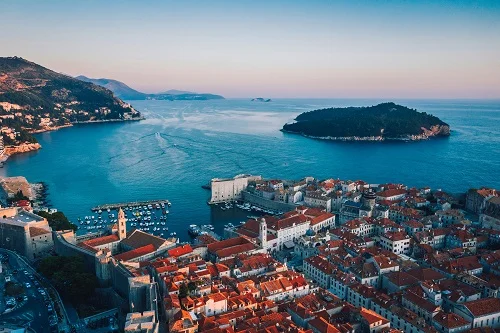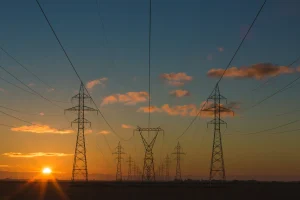A coastal engineer is a specialized civil engineer who focuses on the design, construction, and maintenance of structures and infrastructure in coastal areas. Their work is essential in protecting coastal communities from erosion, flooding, and other natural hazards while also preserving the delicate balance of the coastal environment. With a deep understanding of coastal processes, such as waves, tides, and sediment transport, coastal engineers play a critical role in planning design and implementing coastal engineering projects that are both sustainable and resilient.
The role of a coastal engineer
The responsibilities of a coastal engineer are multifaceted and encompass a wide range of tasks. Responsibilites include conducting site assessments, developing numerical models to simulate coastal processes, and designing coastal structures such as seawalls, breakwaters, and groins.
Coastal engineers are also involved in beach nourishment projects, which involve replenishing eroded beaches with sand or dredge material. Additionally, they may be tasked with shoreline stabilization efforts to protect coastal properties from erosion.
Coastal engineering projects: challenges and solutions
Coastal engineering projects often present unique challenges due to the dynamic nature of the coastal environment. Factors such as sea level rise and extreme weather events can significantly impact the design and effectiveness of coastal protection measures. Coastal engineers must carefully consider these factors when developing coastal engineering projects.
For example, a seawall designed to protect a coastal community from erosion may inadvertently accelerate erosion rates on adjacent beaches. To mitigate these negative impacts, coastal engineers often employ a combination of hard engineering structures and soft engineering techniques, such as vegetation and dune restoration.
The importance of coastal environment
Coastal engineers have a deep appreciation for the coastal environment and the importance of preserving it for future generations. They work closely with environmental scientists, biologists, and other stakeholders to ensure that coastal engineering projects have minimal adverse impacts on ecosystems and wildlife.
Restoration projects are increasingly becoming a focus of coastal engineering, as engineers seek to restore damaged coastal habitats and improve water quality.
Coastal engineering techniques: A toolbox for shoreline protection
Coastal engineers have a vast array of techniques at their disposal to address the challenges of coastal erosion and flooding. These techniques can be broadly categorized into hard engineering and soft engineering approaches.
Hard engineering structures
Hard engineering structures involve the construction of physical barriers to protect the coastline from the forces of nature. Some common examples include:
- Seawalls: Vertical structures built along the shoreline to deflect waves and prevent erosion.
- Breakwaters: Structures built offshore to dissipate wave energy before it reaches the shoreline.
- Groins: Structures extending perpendicularly from the shore to trap sand and prevent erosion.
- Jetties: Structures built at the entrance to harbors or estuaries to control the flow of water and sediment.
While hard engineering structures can be effective in protecting coastlines, they can also have negative environmental impacts, such as disrupting natural coastal processes and altering ecosystems. Therefore, coastal engineers must carefully consider the potential consequences of using hard engineering solutions.
Soft engineering techniques
Soft engineering techniques focus on working with natural processes to protect and restore coastal ecosystems. Some examples of soft engineering approaches include:
- Beach nourishment: Replenishing eroded beaches with sand or dredged material.
- Dune restoration: Restoring or creating dunes to act as natural barriers against storm surge.
- Vegetation planting: Planting vegetation on the shoreline to stabilize the dunes and reduce erosion.
- Tidal marsh creation: Creating or restoring tidal marshes to provide natural flood protection and improve water quality.
Soft engineering techniques are generally considered more environmentally friendly than hard engineering structures and can often provide more sustainable and resilient coastal protection. However, they may not be suitable for all coastal conditions, and they may require ongoing maintenance and monitoring.
The role of technology in coastal engineering
Technology has played an increasingly important role in coastal engineering, providing valuable tools for data collection, analysis, and modeling. Some of the key technologies used in coastal engineering include:
- Remote sensing: Using satellites and aerial imagery to monitor coastal changes over time.
- Numerical modeling: Developing computer models to simulate coastal processes and predict the impacts of various engineering interventions.
- Geographic information systems (GIS): Integrating spatial data to analyze coastal features and assess vulnerability to hazards.
- Coastal monitoring systems: Deploying sensors and other instruments to collect data on wave conditions, water levels, and sediment transport.
By leveraging these technologies, coastal engineers can gain a better understanding of coastal dynamics and make more informed decisions about shoreline protection and management.
Case studies of successful coastal engineering projects
There are many examples of successful coastal engineering projects around the world that have protected coastal communities and preserved valuable ecosystems. Some notable case studies include:
- The Chesil Beach Management Scheme in Dorset, England: This project involved a combination of hard and soft engineering measures to protect the iconic Chesil Beach from erosion and flooding.
- The Sausalito Seawall Replacement Project in California, USA: This project replaced a deteriorating seawall with a more sustainable design that incorporated living shorelines and tidal marsh restoration.
- The Palm Jumeirah development in Dubai, UAE: This ambitious project involved creating a man-made island in the shape of a palm tree, using advanced engineering techniques to reclaim land from the sea.
These case studies demonstrate the effectiveness of coastal engineering in addressing the challenges of coastal erosion and development. By carefully considering the specific needs and conditions of each coastal area, engineers can design and implement solutions that are both effective and sustainable.
Coastal engineer as project manager
In addition to their technical expertise, coastal engineers often serve as project managers, overseeing all aspects of a project from the initial planning stages through to successful completion. This requires strong leadership, communication, and problem-solving skills. Coastal engineers must be able to effectively coordinate with a variety of stakeholders, including government agencies, regulatory authorities, and the public.
Coastal engineers play a vital role in protecting coastal communities and preserving the delicate balance of the coastal environment. Their work is essential in mitigating the impacts of climate change and ensuring the long-term sustainability of coastal zones.
If you are interested in pursuing a career in coastal engineers, consider the following recommendations:
- Increased investment in research: Continued research is needed to better understand the complex interactions between coastal processes and human activities.
- Integrated coastal zone management: A comprehensive and integrated approach to coastal zone management is essential for addressing the challenges of coastal development and climate change.
- Education and outreach: Coastal engineers should play a more active role in educating the public about the importance of coastal protection and the challenges facing coastal communities.
- Collaboration: Stronger collaboration between coastal engineers, environmental scientists, and policymakers is needed to develop effective and sustainable solutions for coastal challenges.






